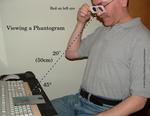 Viewing a Phantogram |
The photos in the following collections are a special kind of stereoscopic (3D) colour anaglyph, called a phantogram (technically, a stereoscopic anamorphosis, also sometimes called a pop-up anaglyph). To view these, you'll need a pair of red-cyan or red-blue 3D glasses, with the red filter over your left eye. The phantogram prints should be laid flat on a horizontal surface, and are typically viewed at an angle of about 45 degrees, from a distance of about 20 inches (50 cm), unless otherwise indicated. (This is called the "sweet spot.") The stereoscopic effect should be quite remarkable, with objects appearing to be standing above the surface of the print. |
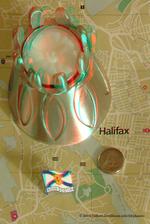 Two-Bit Phantograms |
Two-Bit Phantograms
These particular phantograms were designed to be printed as standard 4x6 inch (A6) prints, such as the kind you can now get for around 25 cents from places like Photolab.ca, among others. They are mostly still-life compositions using miniatures, trinkets, and various other items of kitch. Basically, good, cheap fun! |
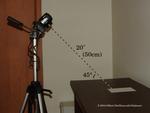 Phantogram How-To |
Phantogram How-To
A quick photo-tutorial on how the Two-Bit Phantograms were made, using a regular digital camera and some open-source software. |
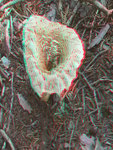 Phantogram Folio Submissions |
Phantogram Folio Submissions
A series of larger, letter-sized phantograms, submitted to a shared portfolio that circulates by post among some members of the Phantogram Yahoo! Tech Group. This folio allows participants to view and critique each others' work. |
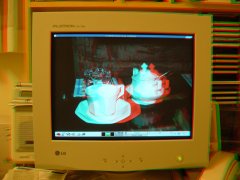 |
If you've enjoyed this collection of phantograms, you might also want to see my Stereoscopic Photo Gallery. I also collaborated with Rick Unger in a large-format phantogram display for the Winnipeg Folk Festival's Prairie Outdoor Exhibit. |
 |
This work is licensed under a Creative Commons License. Some patents may apply to the process of making phantograms for commercial purposes. |